An essential component of this project is to favour interaction among different departments of the University of Trento, as well as the intention to strengthen the collaboration with external institution by inviting external speakers. One fundamental means for this interaction is the organization of seminars as well as lectures and courses where the different researchers involved in the project may be stimulated by interdisciplinary ideas. The list of the organized seminars and courses is given below.
Optimal path synthesis for differential-drive robots with limited field of view.
Where and when: WEDNESDAY FEBRUARY 22 2017, 16:00-17:00.; Girasole room, Povo 2, via Sommarive 9, Povo - Trento (download the flyer)
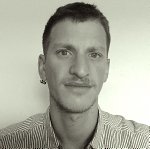
Speaker: Andrea Cristofaro, University of Camerino, Italy
Abstract: Consider a robot with unicycle kinematics equipped with a limited Field--Of--View (FOV) camera, which must keep a given feature in sight. The goal is characterizing the family of optimal paths between two assigned robot poses. Previous works on this subject have provided a complete synthesis of shortest paths for the case in which the FOV is limited in the left and right image plane directions (H-FOV). Toward the final target of obtaining the optimal paths synthesis for a realistic image plane modeled as a rectangle, the complementary case in which only upper and lower image plane direction are limited (V-FOV) is investigated. In particular, two different cost functions are considered corresponding to seeking for shortest and time-optimal paths, respectively. A finite alphabet of extremal arcs is obtained and, for the case of minimum length, it is shown that the optimal path might not exist, i.e. the infimum of the cost function might be not achieved. As a conclusion to the presentation, an overview of the complete HV-FOV synthesis problem is provided..
Biosketch: Dr. Andrea Cristofaro has received the M.Sc. in Mathematics from University of Rome La Sapienza (Italy) in 2005 and the PhD in Information Science and Complex Systems from University of Camerino (Italy) in 2010. Between 2010 and 2015 he has been first a post-doctoral fellow with eMotion research team, INRIA Rhone-Alpes, Grenoble (France) and then a Marie-Curie post-doctoral fellow with the Department of Engineering Cybernetics, Norwegian University of Science, Trondheim (Norway). From August 2015 to February 2016 he has been Adjunct Associate Professor with the same Department. Since March 2016 he is Assistant Professor in System and Control Theory at the Department of Mathematics, University of Camerino. His research interests include: constrained and robust control, optimal control, estimation, control allocation, autonomous vehicles, control of partial differential equations. Dr. Cristofaro is author of several scientific papers, and he is in the Editorial Board of IET Journal of Engineering and of International Journal of Control, Automation and Systems.
Workshop "Hybrid Dynamical Systems: Optimization, Stability and Applications".
Where and when: MONDAY 9 -- WEDNESDAY 11 JANUARY 2017.; Aula Kessler Sociologia, Via Verdi, Trento (download the poster)
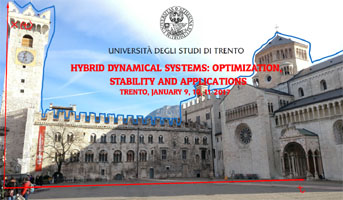
The aim of the workshop is to bring together scientists working on a wide range of theory and applications of hybrid dynamical systems, meant in a rather broad sense. The program consists of more than twenty presentations from invited speakers. For information about the program, the registration and the fees, please visit the website of the workshop http://r.unitn.it/en/maths/opthysys/workshop-january-9-11-2017
Lyapunov-like functions and Lie brackets.
Where and when: WEDNESDAY DECEMBER 21 2016, 10:00-11:00.; Aula Seminari di Fisica, Povo 0 (download the flyer)
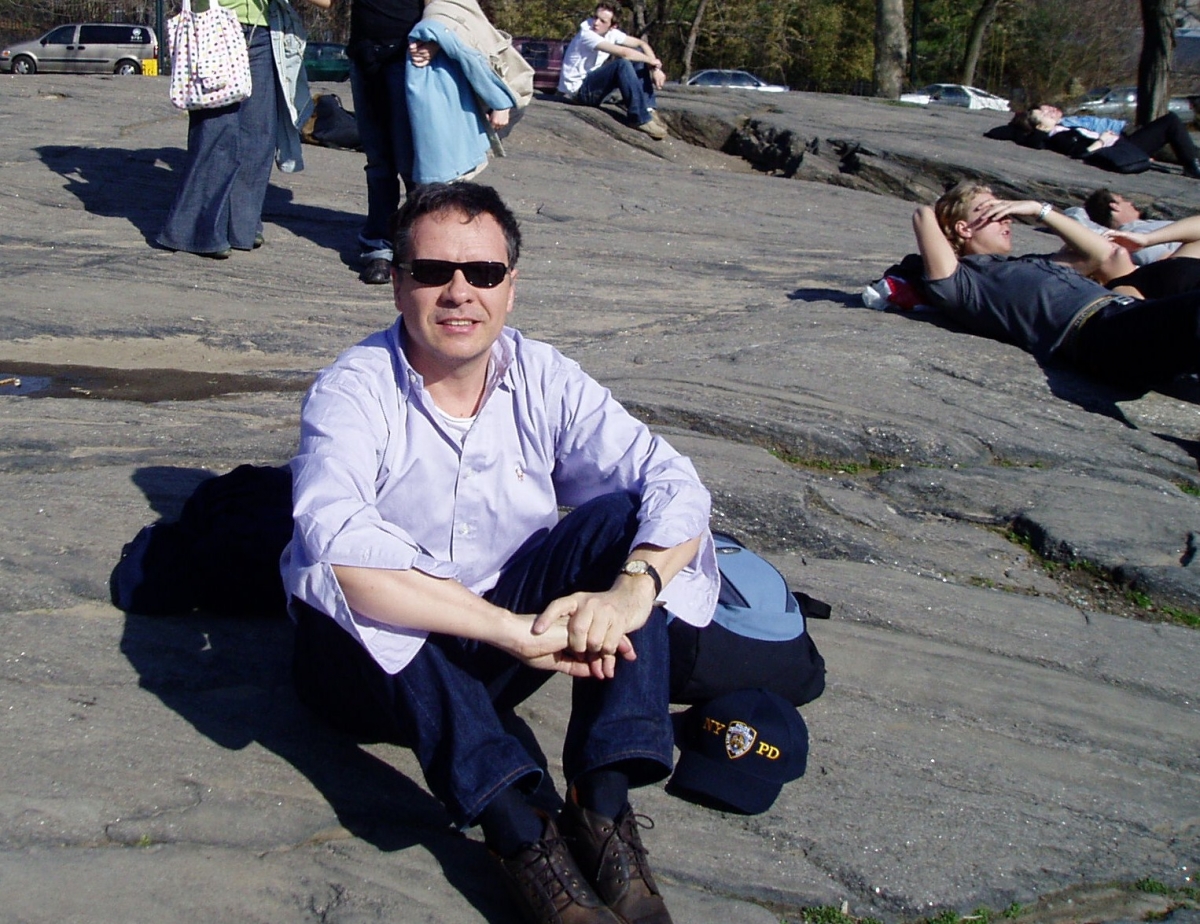
Speaker: Franco Rampazzo, University of Padova, Italy
Abstract: We embed the dissipative relation that defines a control Lyapunov function in a differential inequality involving Hamiltonians built from iterated Lie brackets. The solutions of the resulting extended relation, here called degree-k control Lyapunov functions (k >= 1), turn out to be still sufficient for the system to be globally asymptotically controllable. Furthermore, we work out examples where no standard (i.e., degree-1) smooth control Lyapunov functions exist while a C-infinity degree-k control Lyapunov function does exist, for some k > 1. The whole extension is performed under very weak regularity assumptions on the system, up to the point that (set valued) Lie brackets of locally Lipschitz vector fields can be considered as well.
Biosketch: Franco Rampazzo is full professor of mathematical analysis at the department of mathematics of the university of Padova. His research field is mostly in mathematical control theory, classical mechanics and differential geometry.
Workshop "Controllability and Hysteresis".
Where and when: NOVEMBER 4 2016, Aula Seminari di Matematica, via Sommarive 14, Povo - Trento.; (download the flyer)
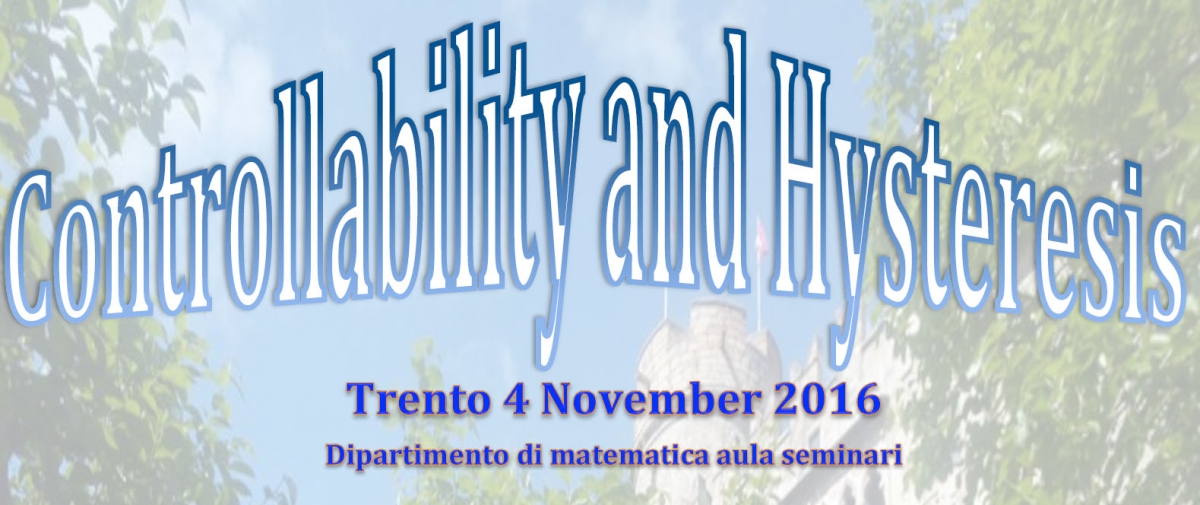
Speakers: Marco Andreetto, Franco Cardin, Matteo Cocetti, Giovanni Colombo, Marco Frego, Laetitia Giraldi, Enrico Pagani, Vincenzo Recupero, Augusto Visintin, Marta Zoppello.
Abstract: The workshop is mainly (but not strictly) focused on controllability and stability of systems affected by hysteresis effects. There will be also talks on general aspects of hysteresis/rate-independent mathematical models and on control of robotic vehicles.
Timetable. Friday November 4, 9:00-17:30, Department of Mathematics, Aula Seminari.
Control of power converters and electrical drives.
Where and when: OCTOBER 11-14-17-19-21 2016, via Sommarive 9, Povo - Trento.; (download the flyer)
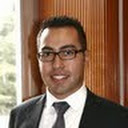
Speaker: Antonino Sferlazza, Department of Energy Information Technology Engineering and Mathematical Modelling, University of Palermo
Abstract: The course deals with the study of power converters and electrical drives employed in both the industrial field and the electric traction. In particular will be focused the control techniques actually used. After a presentation of the principal converter topologies (DC/DC and DC/AC) and the related control techniques, we will study the control of different types of electrical drives based on the different types of employed motor. The type of electric machines presented in this course will be the DC machine, the permanent magnet synchronous motor and the induction machines. Starting from the mathematical model of the electric machine under study, the main control techniques of these machines will be presented, such as the position and speed regulation both open loop and closed loop, the field oriented control, the direct torque control and so on.
Timetable. Tuesday 11 09:00-12:00 and 14:00-17:00 room A224, Friday 14 09:00-12:00 room A224, Monday 17 9:00-12:00 room A213, Wednesday 19 09:00-12:00 room A224, Friday 21 09:00-12:00 room A224.
Biosketch: Antonino Sferlazza was born in Palermo, Italy, in November 1987. He received the Master’s degree in automation engineering and the Ph.D. degree in control system engineering from the University of Palermo, Palermo, Italy, in 2011 and 2015, respectively. Currently he is postdoctoral research fellow at University of Palermo. He is also research collaborator with the ISSIA CRN. He was also visiting PhD student at University of California at Santa Barbara, USA, and at LAAS CNRS, Toulouse, France. His research interests include the development of feedback control algorithms for nonlinear dynamical systems, estimation of stochastic dynamical systems, hybrid systems, and applications of control of electrical drives, power converters, and mechanical systems.
<\strong>
Four Lectures on Optimal Control Problems.
Where and when: SEPTEMBER 21-28 2016.; (download the flyer)
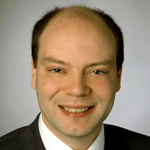
Speaker: Matthias Gerdts, Universität der Bundeswehr München
Abstract: Introduction to Optimal Control Problems (OCP), overview and examples. Theoretical foundations and necessary conditions for problems with Ordinary Differential Equations (ODE) or Differential Algebraic Equations (DAE). Indirect methods solution technique. Direct discretisation, collocation and shooting approaches. Link to control techniques such as Model Predictive Control (MPC). Advanced technique for OCP. Mixed integer formulations, sensitivity analysis, bilevel OCP.
Timetable. Wednesday 21 11:00-13:00 room B105, Thursday 22 15:00-17:00 room B104, Monday 26 9:00-11:00 room B104, Wednesday 28 11:00-13:00 room B105.
Biosketch: Matthias Gerdts is full professor in Engineering Mathematics at Universität der Bundeswehr München and is actively working on optimal control and parameter identification with ODEs, DAEs and PDEs, semismooth Newton methods, nonlinear programming, mixed-integer optimal control, realtime optimization and realtime optimal control, scientific computing and applications in engineering sciences and industry. Is author of 2 books, 36 publication in peer-reviewed journals and 26 publications in proceedings and book chapters. He done more than 100 scientific talks at international conferences and workshops, amongst them 5 plenary talks and keynote lectures.
Stability Analysis and Stabilization of Systems With Input Backlash.
Where and when: TUESDAY SEPTEMBER 13 2016, 10:30-11:30.; DII Room A208, via Sommarive 9, Povo 2 - Trento (download the flyer)
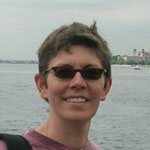
Speaker: Sophie Tarbouriech
Abstract: This talk deals with the stability analysis and stabilization of linear systems with backlash in the input. Uniform ultimate boundedness stability and stabilization problems are tackled allowing to characterize suitable regions of the state space in which the closed-loop trajectories can be captured. In the state feedback control design, computational oriented solutions are derived to solve suboptimal convex optimization problems able to give a constructive solution..
Biosketch: Sophie Tarbouriech received the PhD degree in Control Theory in 1991 and the HDR degree (Habilitation à Diriger des Recherches) in 1998 from University Paul Sabatier, Toulouse, France. Currently, she is full-time researcher (Directeur de Recherche) in LAAS-CNRS, Toulouse. Her main research interests include analysis and control of linear and nonlinear systems with constraints (limited information), hybrid dynamical systems. She is currently Associate Editor for IEEE Transactions on Automatic Control, IEEE Transactions on Control Systems Technology, Automatica and European Journal of Control. She is also in the Editorial Board of International Journal of Robust and Nonlinear Control. Since 1999, she is Associate Editor at the Conference Editorial Board of the IEEE Control Systems Sociaty. She is also a member of the IFAC technical committee on Robust Control and Nonlinear Systems.
Stability Analysis of Dynamic Output Controllers under Aperiodic Sampling and Input Saturation.
Where and when: THURSDAY SEPTEMBER 8 2016, 10:30-11:30.; DII Seminars Room, via Sommarive 9, Povo - Trento (download the flyer)
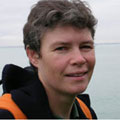
Speaker: Isabelle Queinnec
Abstract: This presentation addresses stability issues of sampled data controllers. Considering a continuous-time linear plant and a linear discrete-time dynamic output feedback control law designed from a classical periodic sampling paradigm, the main goal is to assess the effects of aperiodic sampling on the closed-loop stability. This aperiodic sampling models for instance the communication delays and package losses through a network and induces an hybrid behavior for the system. In addition, the effects of control signal saturation on the stability and the maximal admissible sampling interval are also taken into account . In this context, based on the use of a looped functional, linear matrix inequalities (LMI) are derived to ensure the global asymptotic stability of the origin for the aperiodic sampled-data closed-loop system, provided a bound on the maximal sampling interval is given. An optimization problem in order to evaluate the maximal admissible value for the interval between two sampling instants is then associated to the LMI conditions.
Biosketch: Isabelle Queinnec is currently CNRS researcher at LAAS-CNRS, Toulouse University. She received her PhD degree and HDR degree in automatic control in 1990 and 2000, respectively, from University Paul Sabatier, Toulouse. Her current research interests include constrained control and robust control of processes with limited information, with particular interest in applications on aeronautical systems, robotic, electronic, biochemical and environmental processes. She has been serving as member of the IFAC technical committees on "Biosystems and Bioprocesses" and on "Modelling and Control of Environmental Systems", respectively from 2002 and 2005 and of the IEEE CSS-CEB from 2013. She is currently AE for IET Control Theory and Applications and for the IFAC Journal NAHS (Nonlinear Analysis: Hybrid systems). She is co-author of a book on saturated systems and of more than 50 journal papers, both in control theory and in process engineering.
New a-priori estimates for mean-field games with congestion.
Where and when: TUESDAY JUNE 7 2016, 15:00-16:00.; Aula Seminari Matematica, Dipartimento di Matematica, Povo 0 (download the flyer)
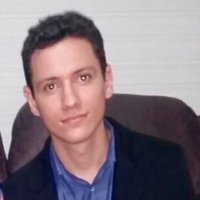
Speaker: David Evangelista da Silveira Junior, KAUST Saudi Arabia
Abstract: We present recent developments in crowd dynamics models (e.g. pedestrian flow problems). Our formulation is given by a mean-field game with congestion. We start by reviewing earlier models and results. Next, we develop our model. Then, we establish new a priori estimates that give partial regularity of the solutions.
Biosketch: David got his mathematics Master's degree at IMPA, Rio de Janeiro, Brazil and he is now a PhD student at Kaust - King Abdullah University of Science and Technology, Saudi Arabia. He is working on nonlinear Hamilton-Jacobi PDEs and mean-field games with applications in economics and finance. He is also interested in general problems of existence of solutions and numerical methods for mean-field games as well in deterministic and stochastic optimal control and viscosity solutions.
Doctoral Course: Introduction to Stochastic Hybrid Systems.
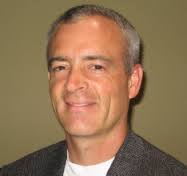
Lecturer: Andrew R. Teel, University of California, Santa Barbara.
Abstract: This short course presents a particular modeling framework for stochastic hybrid dynamical systems. The framework allows for non-unique solutions and randomness affecting both the continuous-time evolution as well as the jumps of the system. Various examples fitting this framework will be used to illustrate concepts. Stability theory for these systems will be the primary focus of the course. Different stability notions, including asymptotic stability in probability as well as recurrence, will be considered. Lyapunov function theory for these properties will be developed, as well as invariance-like principles and other relaxations of classical Lyapunov conditions. This theory will require a careful development of the meaning of solution for a stochastic hybrid system. Moreover, in order to motivate the approach taken, some preliminary results pertaining to non-stochastic hybrid systems will be recalled.
Where and when: MONDAY-FRIDAY MAY 9-13 2016.; Polo Ferrari, building Povo 1 (download the flyer)
Course Topics: 1) Brief review of non-stochastic hybrid systems (Formal model, Solution concept, Stability definitions, Lyapunov and Matrosov functions, Invariance principle); 2) Formal models of stochastic hybrid systems; 3) Solution concept for stochastic hybrid systems (Randomness only in the jumps, Randomness also in the flows); 4) Stability definitions (Asymptotic stability in probability, Recurrence); 5) Sufficient conditions for stability (Lyapunov functions, Matrosov functions); 6) Additional results for the case of randomness only in the jumps (A sequential compactness result, An invariance-like principle, Converse Lyapunov theorems, Robustness, Equivalent characterizations of stability).
Timetable. Monday 9 14:00-17:00 room A208, Tuesday 10 9:00-12:00 room A211, Wednesday 11 9:00-12:00 room A212, Thursday 12 14:00-17:00 room A212, Friday 13 9:00-12:00 room A210
Biosketch: Andrew R. Teel received the M.S. (1989) and Ph.D. (1992) degrees in electrical engineering from the University of California, Berkeley. He was a post-doc fellow at the Ecole des Mines de Paris, France and an Assistant Professor at the Electrical Engineering Department, University of Minnesota. He joined the Electrical and Computer Engineering Department, University of California, Santa Barbara in 1997, where he is currently a Professor. His research interests are in nonlinear and hybrid dynamical systems, with a focus on stability analysis and control design. He received, among many others, the first SIAM Control and Systems Theory Prize in 1998, the 1999 Donald P. Eckman Award and the 2001 O. Hugo Schuck Best Paper Award, both given by the American Automatic Control Council, and the 2010 IEEE Control Systems Magazine Outstanding Paper Award. He is an area editor for Automatica, an IFAC and an IEEE Fellow.
Registration. Participation to the course is free but the interested participants should contact the organizers by email (see the flyer)
Lodging. No refund for travel and staying expenses is planned. Povo is located on the eastern hill of Trento at 15 minutes by bus from the city center. Here are some bed&breakfast in Povo: Camere Ester, Agriturismo Ponte Alto. A list of hotels in Trento is easily found on the web. The reservation of the room is responsibility of the participant. The university canteen will be at disposal of the participants (7.50 euros for a complete meal).
On the asymptotic stability assessment of compact sets in hybrid systems using weak Lyapunov functions.
Where and when: FRIDAY MAY 06 2016, 9:30-12 A.M.; Room n. 211, DII, Povo 1. (download the flyer)

Speaker: Andrew Teel, University of California, Santa Barbara
Abstract: In this series of meetings and seminars, we will provide an extensive overview of some recently developed techniques for studying the asymptotic stability of compact attractors for hybrid dynamical systems by constructing different forms of Lyapunov functions. Lyapunov functions are called "strong" whenever they are positive definite with respect to the attractor and strictly decreasing outside the attractor itself. For several first-principles-inspired Lyapunov functions (like the total energy of a mechanical systems), these properties are rarely met in practice, so that it is very convenient to resort to “weakened" Lyapunov conditions. Examples of techniques that are compatible with weak Lyapunov functions are the well known invariance principle, as well as constructions like nested Matrosov functions. Additional relaxations of the classical Lyapunov conditions can be also obtained by not requiring the typical differentiability assumption but resorting to Lipschitz-only functions or even lower semicontinuous functions. Many of these relaxations will be covered during this seminar and different applications where they are a useful tool for stability assessment will be discussed.
Biosketch: Andrew R. Teel (S’91–M’92–SM’99–F’02) received the A.B. degree in engineering sciences from Dartmouth College, Hanover, NH, in 1987, and the M.S. and Ph.D. degrees in electrical engineering from the University of California, Berkeley, in 1989 and 1992, respectively. He then became a postdoctoral fellow at the Ecole des Mines de Paris, Fontainebleau, France. In 1992, he joined the faculty of the Electrical Engineering Department, University of Minnesota, where he was an Assistant Professor until 1997. Subsequently, he joined the faculty of the Electrical and Computer Engineering Department, University of California, Santa Barbara, where he is currently a Professor. His research interests are in nonlinear and hybrid dynamical systems, with a focus on stability analysis and control design. Dr. Teel received the NSF Research Initiation and CAREER Awards, the 1998 IEEE Leon K. Kirchmayer Prize Paper Award, the 1998 George S. Axelby Outstanding Paper Award, and was the recipient of the first SIAM Control and Systems Theory Prize in 1998. He was the recipient of the 1999 Donald P. Eckman Award and the 2001 O. Hugo Schuck Best Paper Award, both given by the American Automatic Control Council, and also received the 2010 IEEE Control Systems Magazine Outstanding Paper Award. He is an area editor for Automatica, and a Fellow of IFAC.
References:
On some nonlinear degenerate elliptic equations arising in stochastic control.
Where and when: MONDAY MARCH 21 2016, 16:30-17:30 A.M.; Aula Seminari Matematica, Dipartimento di Matematica, Povo 0 (download the flyer)
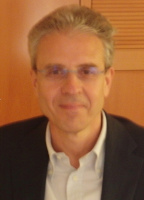
Speaker: Martino Bardi, University of Padova
Abstract: The talk is on a joint work with Annalisa Cesaroni and Luca Rossi. We consider a class of Bellman equations in bounded domains where the ellipticity of the operator degenerates at the boundary. We prove that sub- and supersolutions whose growth at the boundary is suitably controlled must be constant. We apply this result to two problems of optimal control for the diffusion process associated to the Bellman operator. In the first problem the cost is a function of the exit point of the process from the domain. The second problem is a small discount limit related with ergodic control with state constraints.
References:
Dynamic positioning systems and control of vessels: open problems and perspectives.
Where and when: THURSDAY MARCH 16 2016, 10-12 A.M.; Girasole room, DII, Povo 2. (download the flyer)
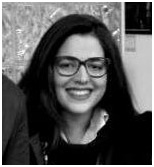
Speaker: Silvia Donnarumma, University of Genoa
Abstract: Automatic steering of ships has always received a lot of attention from the control community. Milestones such as reduced manning, decreasing fuel consumptions and performance optimization has led to develop new design paradigms from the classic PID controller to adaptive and robust control. Modern vessels require higher and higher levels of automation on board to guarantee enhanced performances in several environmental conditions.In this context, more sophisticated autopilots and speed pilots enable ship masters to operate the vessel with the desired heading and speed. Vessels, as well as all mechanical systems, are subject to saturations. In this context, the design of controllers that take into account saturations become crucial. The use of PID regulators is unavoidable for companies that deal with on board automation since a reduced number of parameters facilitate the tuning during sea tests. A good compromise between simplicity and effectiveness can be reached by the use of Linear Matrix Inequalities (LMIs) and anti-windup techniques, in order to setup the controller taking actuator saturation into account. Another significant aspect of this kind of systems is the variability of the scenarios where the vessel can operate. For such a reason, hybrid control could enable switching either among linear or nonlinear controllers according to the prevailing operational regimes. The highest level of automatic control of vessel position and heading is called dynamic positioning (DP). Such technology has come a long way in the seventies since its inception, developing alongside the oil industry. Despite of the crisis of the oil industry, the research in this field is still current, for the variety of its applications in several aspects of marine industry,i.e., oceanographic vessels, navy vessels,etc. The main aim of simulation based design is to reduce sea trials that would be very expensive and, in some cases, also dangerous. Furthermore,it is not always possible to find the design environmental conditions in order to test the worst case failure performance. For such a reason, the preliminary virtual test of the DP controller is a very important phase of the DP system design. When dealing with vessels that have to accomplish with several and particular operational requirements the forecasting of the dynamic behavior is needed.The developed model-based design methodology consists in two separate phases.In the first one, the simulation platform is modeled. It is implemented in two mutually interacting parts, the vessel and actuator dynamics on the one hand, and the controller on the other.The second step was the use of Real Time Hardware in the Loop (RT-HIL) in order to test and verify the functionality capability of the DPcontrol system software.
References:
Doctoral Course: Introductions to Mean Field Games and to Stochastic Hybrid Systems.
When: LATE WINTER/SPRING 2016; Informations: webpage of the course
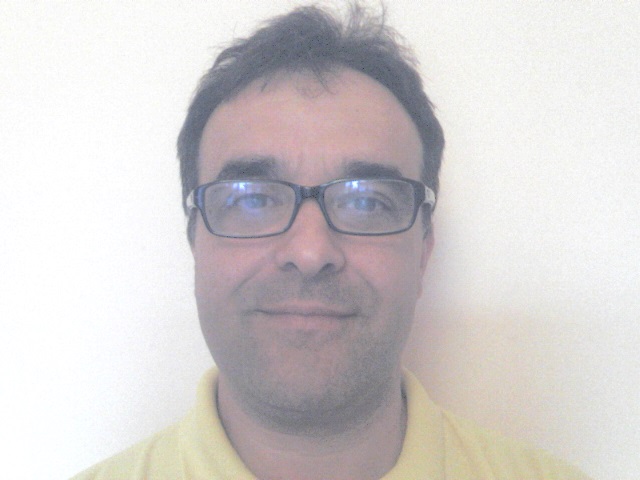
Lecturer part A "Introduction to Mean Field Games": Fabio Bagagiolo, University of Trento.
Abstract: The expression "Mean Field Game" stays to represent an optimal control-like situation with a large number of players, possibly infinitely many ones or even a continuum of players. Each single player directly acts on its own evolution in order to optimize a criterium (e. g. to minimize a cost) which depends on its own state and on the states of all other players (e. g. via the mean of all players states: the "mean field", indeed).
This kind of situation is quite common in the applications/motivations: from the pedestrian dynamics in a crowded environment to the opinion dynamics in a social network; from the management of an electrical power grid with many customers to the goods production in a market with many producers.
The mathematical studies of such a problem are quite recent. Usually, in this setting, the dynamics of the players are modelled by a controlled ordinary differential equation with a stochastic perturbation.
The idea is that the optimal behaviour of all players should consist of those trajectories such that, if implemented, the players population moves in a way such that those trajectories themselves become optimal for every single player (recall that the criterium to be optimized also depends on the evolution of the whole population). This can be seen as an adaptation of the concept of Nash equilibrium.
We then get a system of two coupled evolutive second order partial differential equations: namely a Kolmogorov-Fokker-Planck (KFP) equation for the evolution of the probability density of the population and a Hamilton-Jacobi (HJ) type equation for the optimum (the value function). If the dynamics of the players are not stochastically perturbed, then those equations are first order partial differential equations.
We will briefly introduce the optimal control and game theories. We will recall some facts on partial differential equations. For some particular cases, we will show how to obtain the final KFP-HJ systems as description of the limit of Nash equilibria when the number of players goes to infinity, and we will mathematically study such systems. Finally we will give several examples. A possible extension to a "Hybrid Mean Field Games" will be presented: that is a mean field game with two different players populations changing in time (let us think for example to a population of electrical devices connected by a power grid: the two different populations are the devices turned ON and the devices turned OFF, which, of course, are changing in time).

Lecturer part B "Introduction to Stochastic Hybrid Systems": Andrew Teel, University of California, Santa Barbara.
Abstract: We describe a modeling framework that permits the interaction of jumps and flows, as well as stochastic and adversarial effects in dynamical systems. Due to various sources of non-uniqueness, we call these systems "stochastic hybrid inclusions". This feature is in contrast to the uniqueness of solutions that is a part of most existing results for stochastic hybrid systems. We give examples of systems that fit into the inclusion framework, describe what is meant by a solution to these systems, and illustrate Lyapunov-based sufficient conditions for various notions of stochastic stability. To pave the way, we first briefly review existing frameworks for stochastic hybrid systems and recent results for non-stochastic hybrid inclusions.
Stochastic hybrid systems: An introduction on modeling and stability analysis
When and Where: WEDNESDAY JANUARY 13 2016, 10.30 A.M.; Aula Girasole, Dipartimento di Ingegneria Industriale (download the flyer)

Speaker: Antonino Sferlazza, University of Palermo.
Abstract: Stochastic hybrid systems are dynamical systems that capture the interaction of continuous-time and discrete-time phenomena including also random effects. They represent a very important and general class of systems, and they constitute a starting point for many applications such as financial systems, air traffic management systems, communication networks and networked control systems, biological systems, and power systems.
In this talk, some important models present in the literature will be introduced, which include stochastic switched systems, Markov jump systems, impulsive stochastic systems, switching diffusions, stochastic impulsive systems driven by renewal processes, diffusions driven by Lévy processes, piecewise-deterministic Markov processes, general stochastic hybrid systems, and stochastic hybrid inclusions. During the presentation the common features and the differences among them will be emphasized, introducing a common structure for most models. Subsequently some of the stability concepts for stochastic hybrid systems will be introduced, including Lyapunov stability, Lagrange stability, and asymptotic stability. Some open problems will be finally discussed.
References:
[1] Andrew R. Teel, Anantharaman Subbaraman, Antonino Sferlazza, Stability analysis for stochastic hybrid systems: A survey, Automatica, Volume 50, Issue 10, October 2014, Pages 2435-2456
Optimal control problems for slender microswimmers
When and Where: WEDNESDAY NOVEMBER 11 2015, 3 P.M.; Aula Seminari di Fisica (download the flyer)
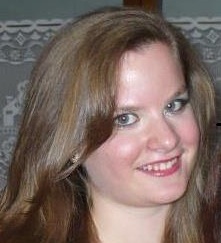
Speaker: Marta Zoppello, University of Padova.
Abstract: The study of the swimming strategies of micro-organisms is attracting increasing attention in the recent literature, moreover recently is emerging a connection between swimming and Control Theory. In fact, low Reynolds number swimming can be considered as a control problem which is linear in the control, and without drift. We focus on the system of the N-link swimmer, a generalization of the classical Purcell swimmer [4], that was introduced in [1]. One of the main diculties in exploiting Control Theory in order to solve effectively motion planning or optimal control problems is the complexity of the hydrodynamic forces exerted by the fluid on the swimmer as a reaction to its shape changes. Whereas the N-link swimmer model introduced is simplified and explicit since Resistive Force Theory is used to couple the fluid and the swimmer. This leads to perform an optimal control study of such system (see [2]). After proving that the swimmer is controllable in the whole plane when it is composed by more than 3 links, we show that there exists an optimal swimming strategy which leads to minimize the time to reach a desired target. Numerical experiments on the case of N = 3 (Purcell swimmer) suggest that the optimal strategy is periodic, i.e. composed of a sequence of identical strokes. Our results indicate that this candidate for an optimal stroke indeed gives a x-displacement twice better than the classical Purcell stroke. Moreover we address the question of the optimal design for the Purcell 3-link swimmer [3]. More precisely we investigate the best link length ratio which maximizes its displacement. Among a set of optimal strategies of deformation (strokes), we provide an asymptotic estimate of the displacement for small deformations, from which we derive the optimal link ratio. Numerical simulations are in good agreement with this theoretical estimate, and also cover larger amplitudes of deformation.
References:
[1] F. Alouges, A. DeSimone, L. Giraldi, and M. Zoppello. Self-propulsion of slender micro-swimmers by curvature control: N-link swimmers. to appear in International Journal of Non-Linear Mechanics, 2013.
[2] L. Giraldi, P. Martinon, M. Zoppello. Controllability and Optimal Strokes for N-link Microswimmer. Preprint in Hal (hal-00798363), CDC 2013.
[3] L. Giraldi, P. Martinon, M. Zoppello. Optimal Design of the Three-link Purcell Swimmer. .Phys. Rev. E 91, 023012
[4] E. M. Purcell: Life at low Reynolds number. American Journal of Physics, 45 (1977), 3-11.
Precise Numerical Methods for the Computation of the Neoclassical Properties of the Aggregate Production Function
When and where: TUESDAY NOVEMBER 3 2015, 3 PM; Aula Seminari Matematica Povo 0 (download the flyer)
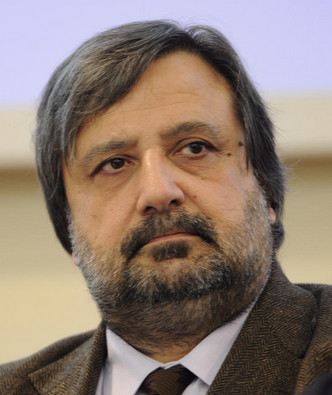
Speaker: Stefano Zambelli, University of Trento.
Biosketch:
Abstract: In this seminar I will discuss the importance of precise numerical computations for economics. I will explain why standard mathematics and standard computer programs are sometimes inadequate for a robust analysis of some very important theoretical as well as applied economic problems. As an example I will discuss the relevance of the need for a precise numerical computation of the aggregate production function and its marginal productivities - and the associated demand for labor and capital - which are often carelessly postulated to be negatively related to factor prices, namely the wage rate and the profit rate. Precise numerical computations are fundamental in order to asses the properties of the aggregate production function. The knowledge of these properties is relevant for the determination of adequate economic policies. For example it is important to know with theoretical precision whether a reduction of the wage rate may lead to an increase of the aggregate demand for labour. Approximate solutions may be not sufficient and if they turn out to be wrong may lead in some cases to dramatic social effects or costs. A robust solution to this problem requires an interdisciplinary effort with contributions from computable analysis, numerical mathematics and computer science.
References:
Hybrid stochastic-deterministic models for simulation of biochemical systems.
Where and when: THURSDAY OCTOBER 29 2015, 3 P.M.; Aula Seminari Matematica, Povo 0. (download the flyer)
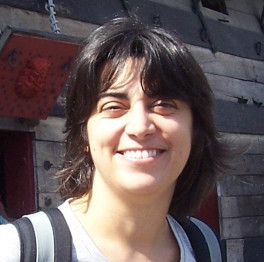
Speaker: Paola Lecca, Professional Member of Association for Computing Machinery, New York, USA
Abstract: At the molecular level, biochemical reactions are random collisions, so that the processes governing the dynamics is inherently stochastic, and would deserve a stochastic mathematical model ro obtain reliable (predictive) simulation. The chemical master equation (CME) is the fundamental evolution equation of the stochastic description of biochemical reaction kinetics. In particular, CME is especially useful when formulating mathematical models of gene regulatory networks and protein-protein interaction networks, where the numbers of molecules of most species are around tens or hundreds. However, in most applications it is impossible to solve the CME directly due to its high dimensionality. Instead, indirect approaches based on realizations of the underlying Markov jump process are used such as the stochastic simulation algorithm (SSA). In the SSA, however, every reaction event has to be resolved explicitly such that it becomes numerically inefficient when the system’s dynamics include fast reaction processes or species with high population levels. Such a dynamic is termed hybrid dynamics, as requires hybrid stochastic/deterministic modelling approaches. In many hybrid approaches, fast reactions are approximated as continuous-deterministic processes or replaced by quasi-stationary distributions either in a stochastic or deterministic context, while slow reaction involving a low number of molecules are modelled with discrete-stochastic formalisms. I will present an overview of the use of hybrid models for biochemical reaction systems including also the recent results and advancements achieved in my research activity.
References:
[1] Paola Lecca, Ian Laurenzi, Ferenc Jordan, Deterministic versus stochastic modelling in biochemistry and systems biology, Woodhead Publishing Series in Biomedicine No. 21, 2012.
[2] Systemic Approaches in Bioinformatics and Computational systems Biology: Recent Advances, by Paola Lecca (Editor), Dan Tulpan (Editor), Kanagasabai Rajaraman (Editor), IGI-Global, 2012.
-
Kick-off seminars: May 27 2015, June 3 2015, June 5 2015. Click here for hours, titles and abstracts.
- Fontanelli's slides.
- Bagagiolo's slides, supplementary material (hybrid_short.pdf)
- Bertolazzi's_slides

